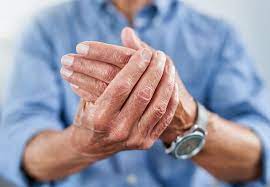Home >

Nội dung bài viết / Table of Contents

Arthritis is an inflammation of the joints, and can affect multiple joints. The most two common types of arthritis are osteoarthritis (OA) and rheumatoid arthritis (RA).
Osteoarthritis
Osteoarthritis can affect the cartilage lining of your joint, which leads to pain and difficulties in movement for the sufferers. In severe condition, loss of cartilage can lead to bone rubbing on bone, altering the shape of joint and forcing the bones out of their normal position. Positions where osteoarthritis commonly appears are the joints of hands, spine, knees, hips. This type of arthritis usually develops in middle-aged people, especially in their late 40s or older.
Rheumatoid arthritis
People who are between 40 and 50 have the high rate to face rheumatoid arthritis.
The outer cover of joint is the first place to be affected. Then, the inflammation will spread into surrounding joints. If a person has rheumatoid arthritis, he or she have to experience the change in their joint’s shape. This may break the bone and cartilage. More seriously, rheumatoid arthritis can also develop problems with other tissues and organs.
Arthritis is quite common. It commonly affects more females than males. Furthermore, it can affect patients at any age, even in children. Most types of childhood arthritis are known as juvenile idiopathic arthritis. However, arthritis can be managed by reducing your risk factors. Please discuss with your doctor for further information.
The common symptoms of arthritis are:
There may be some symptoms not listed above. If you have any concerns about a symptom, please consult your doctor.
If you have any signs or symptoms listed above or have any questions, please consult with your doctor. Everyone’s body acts differently. It is always best to discuss with your doctor what is best for your situation.
Arthritis can develop when cartilage tissues are inflamed, causing a severe reduction. Cartilage is connective tissue responsible for protecting your bones from rubbing against each other when you are moving. The cause varies in different kinds of arthritis.
Osteoarthritis involves wear-and-tear damage to your joint’s cartilage — the hard, slick coating on the ends of bones. Damage can result in bone grinding directly on bone, which causes pain and restricted movement. This wear and tear can occur over many years, or it can be hastened by a joint injury or infection.
In rheumatoid arthritis, the body’s immune system attacks the lining of joint capsule, a tough membrane that encloses all the joint parts. This lining, known as the synovial membrane, becomes inflamed and swollen. The disease process can eventually destroy cartilage and bone within the joint.
There are many risk factors for arthritis. If you have previously injured a joint while joining strenuous activity, you may develop arthritis when you reach the middle age. Obese people also have a higher risk of having arthritis, because the excess muscles, fats, fluids, and so on can put more pressure on your joints than its ability to hold.
The information provided is not a substitute for any medical advice. ALWAYS consult with your doctor for more information.
During the diagnosis, your doctor will check for fluid around the inflammatory joints by one of the following tests:
By analyzing inflammation levels in your blood and joint fluids, the doctor can make conclusion what kind of arthritis you develop.
Arthritis can be treated completely, but there are some ways to reduce the discomfort you have to experience.
For osteoarthritis, medications are often prescribed:
In severe cases, doctor can recommend you some surgeries:
Read more post:
What are some lifestyle changes or home remedies that can help me manage arthritis?Beside medical treatments, some changes in your lifestyle may help you manage your arthritis.
If you have any questions, please consult with your doctor to better understand the best solution for you.
Sources: